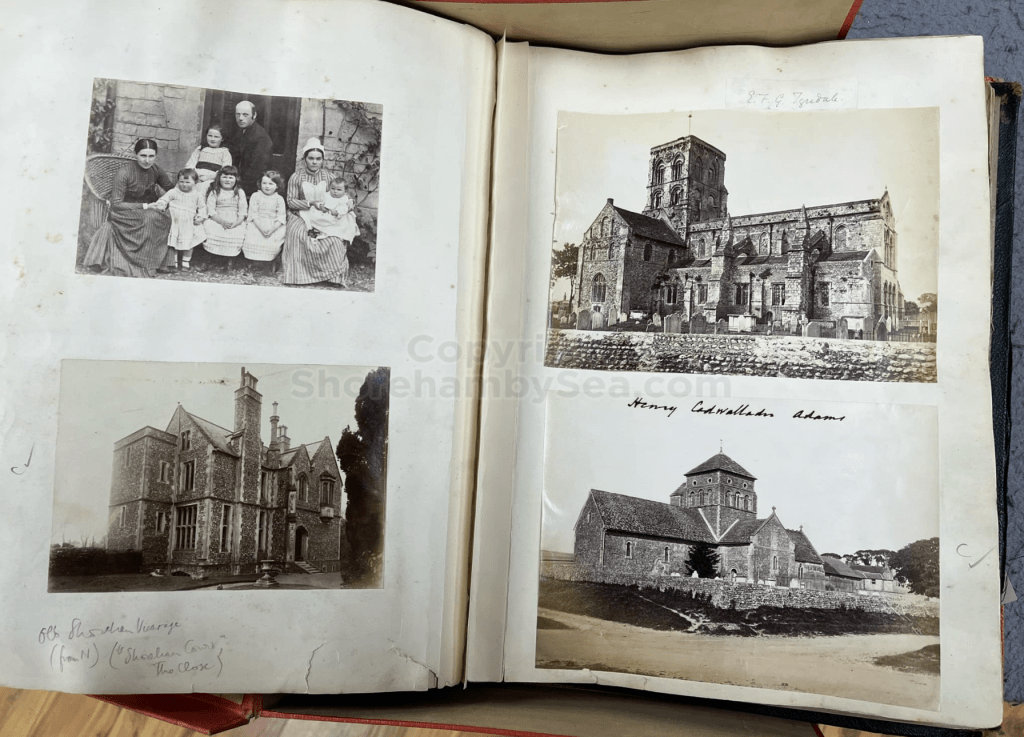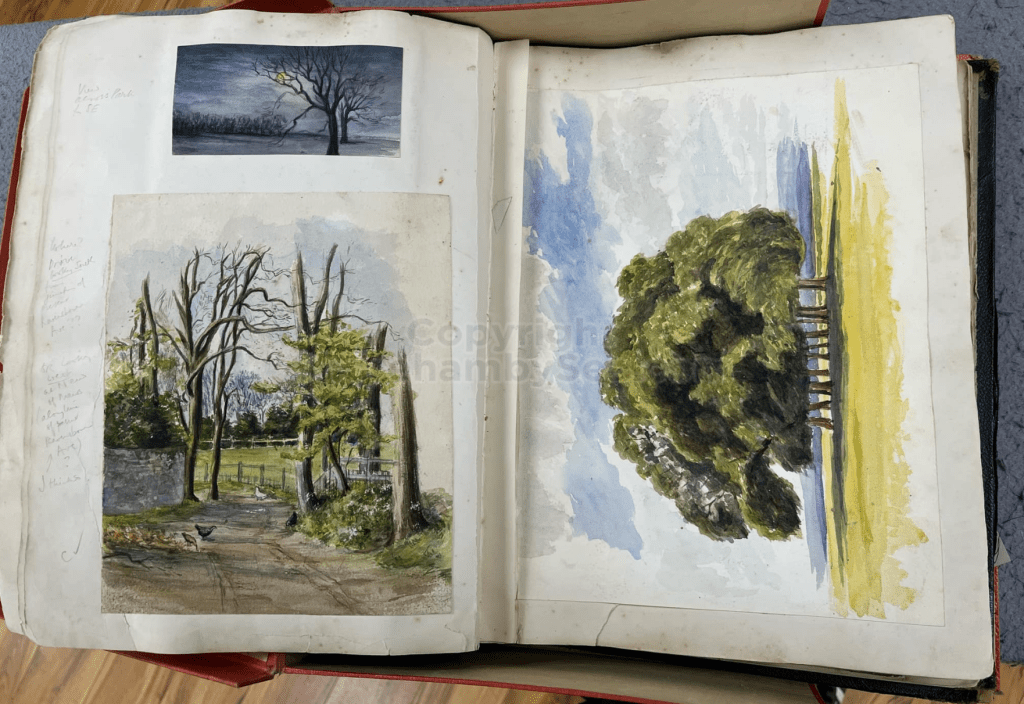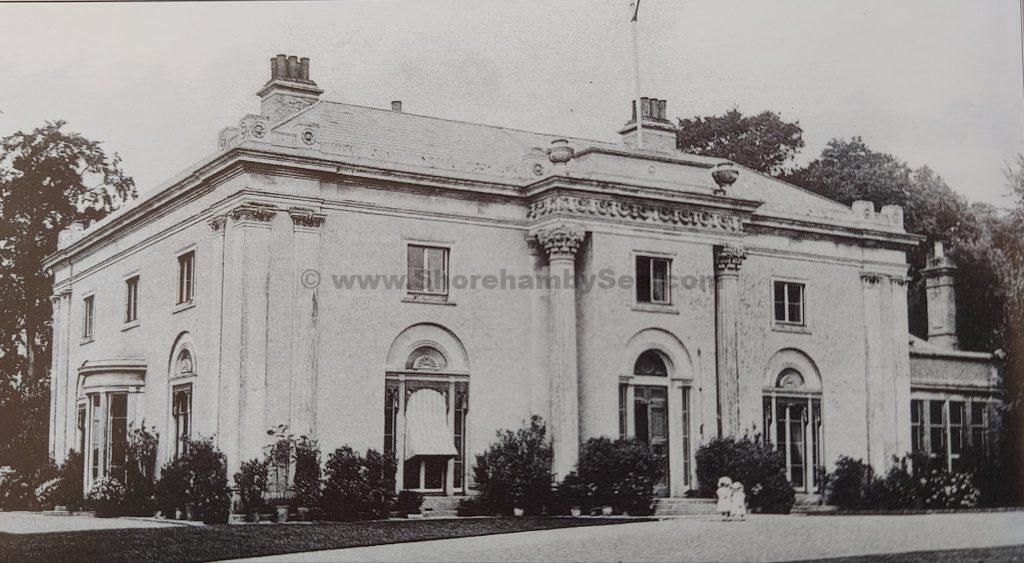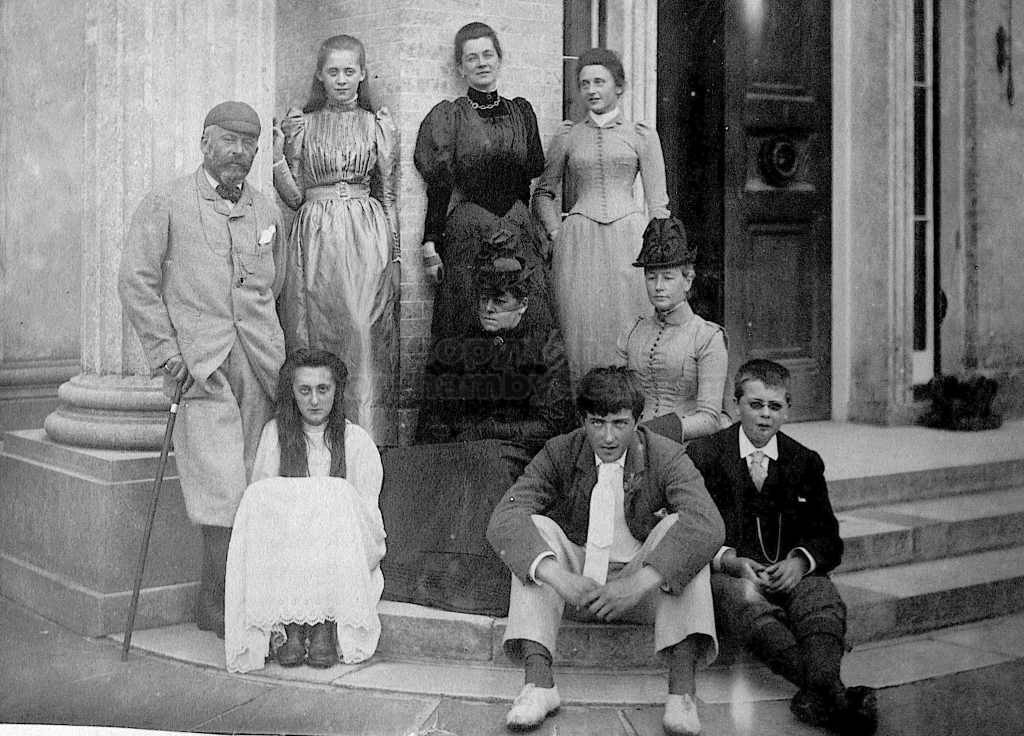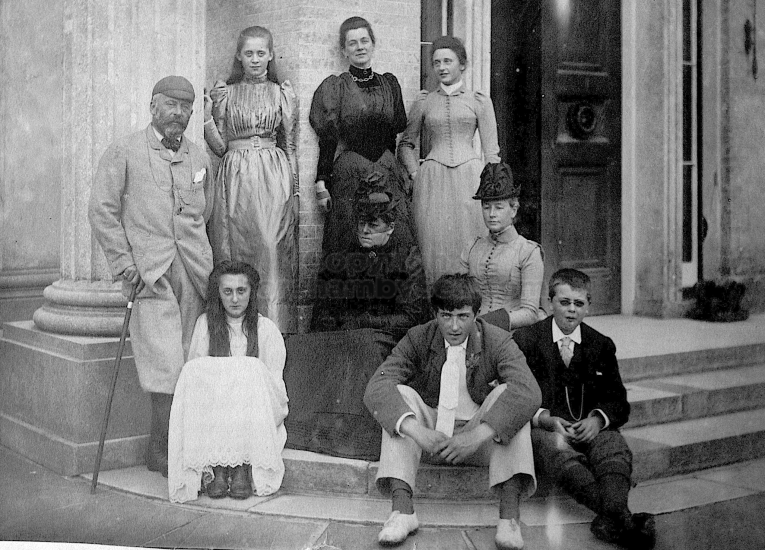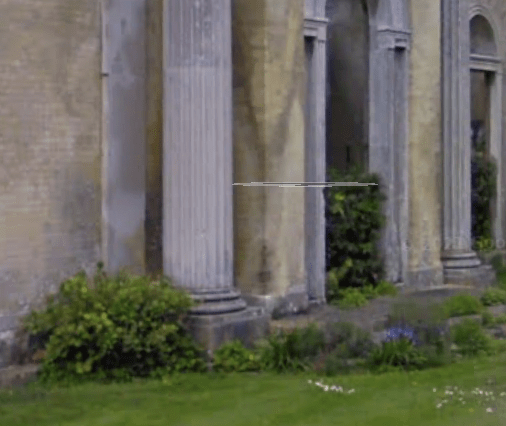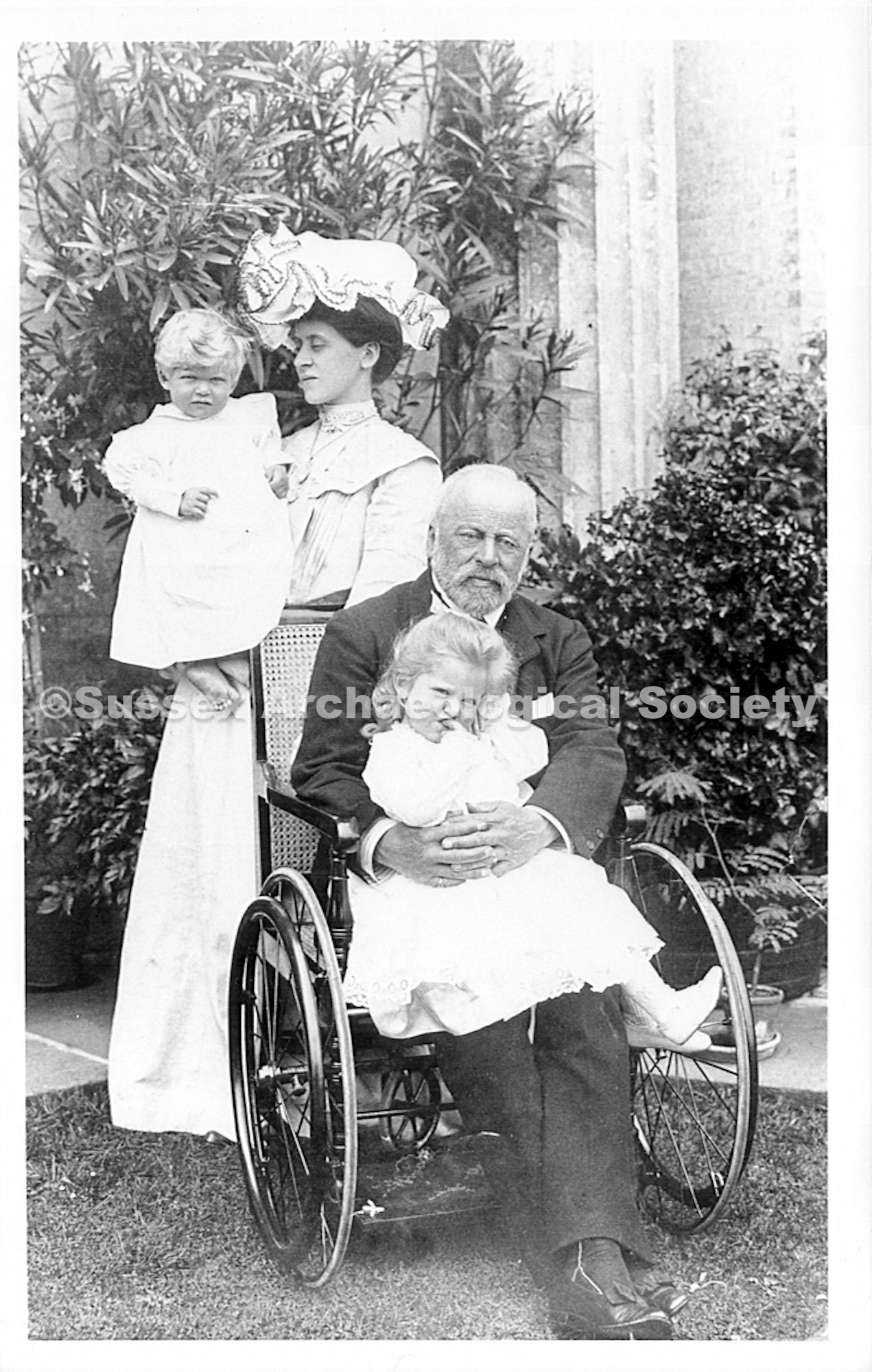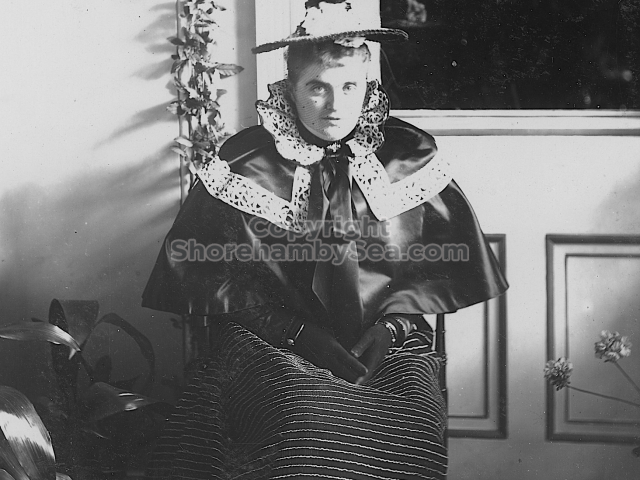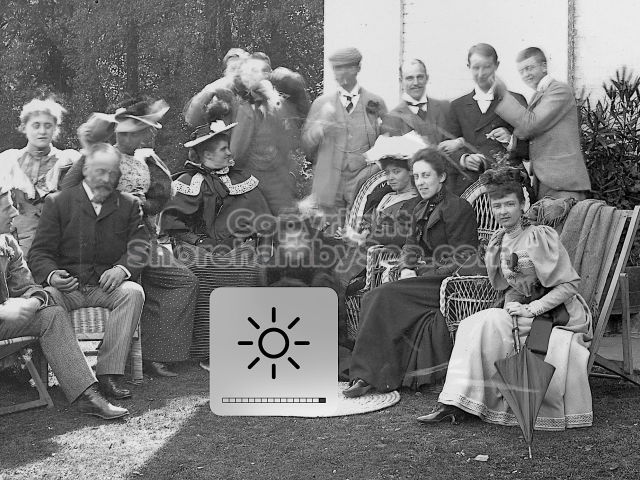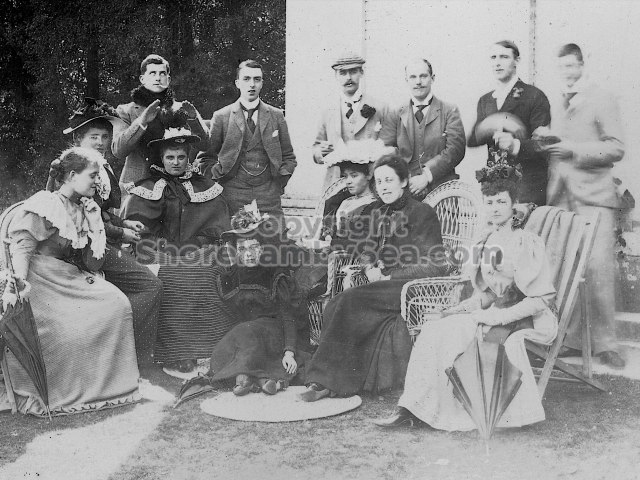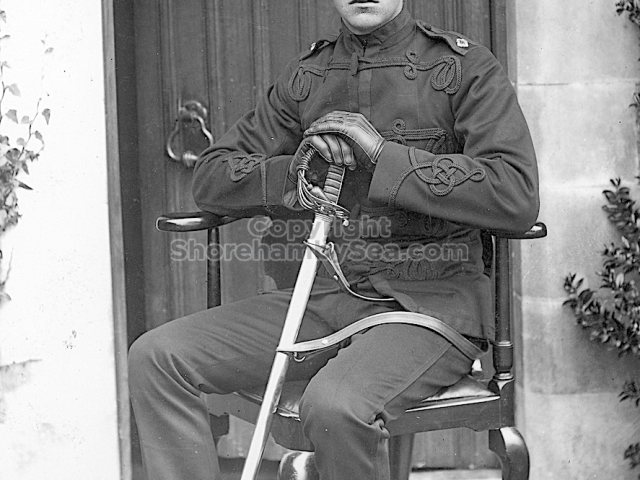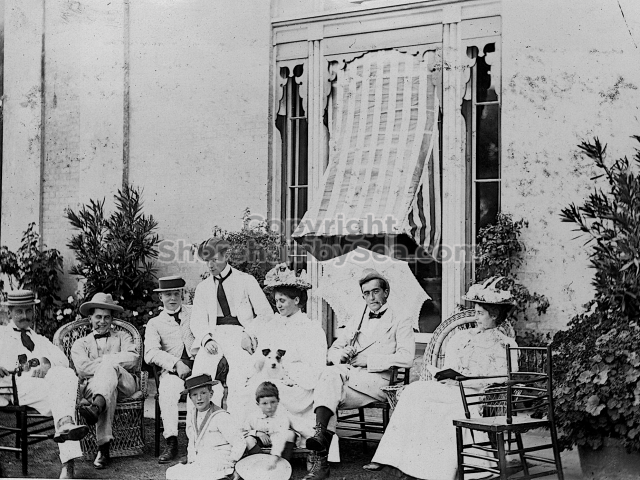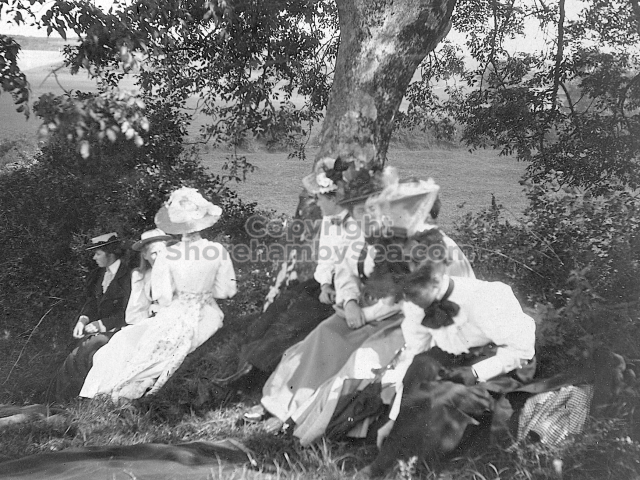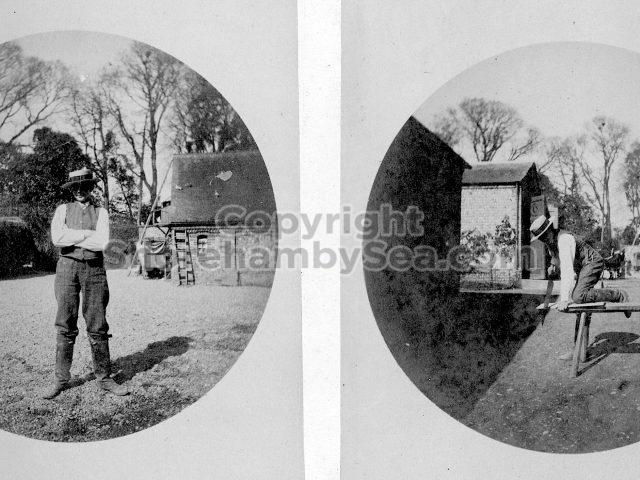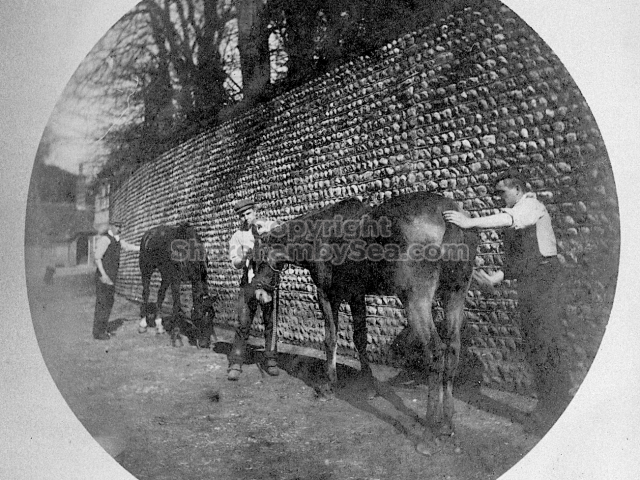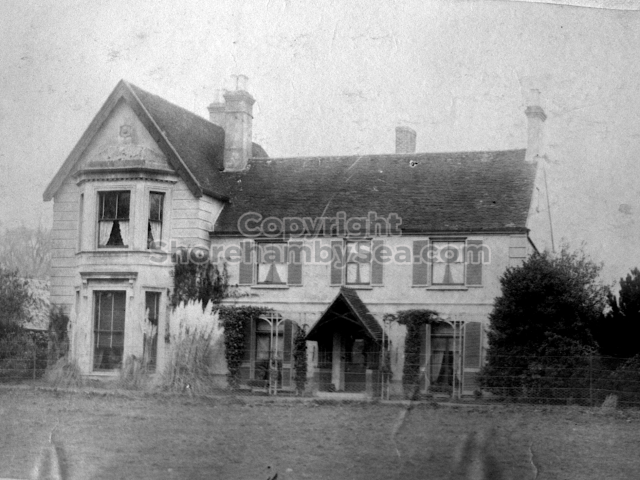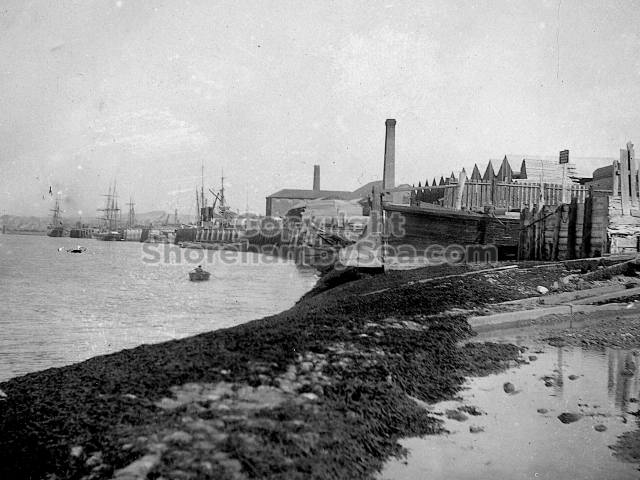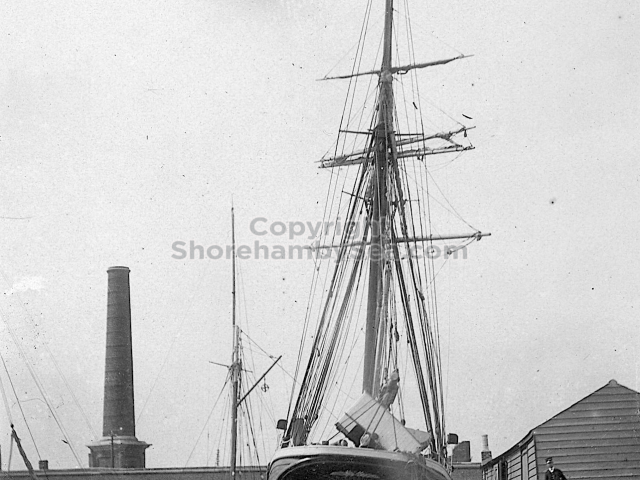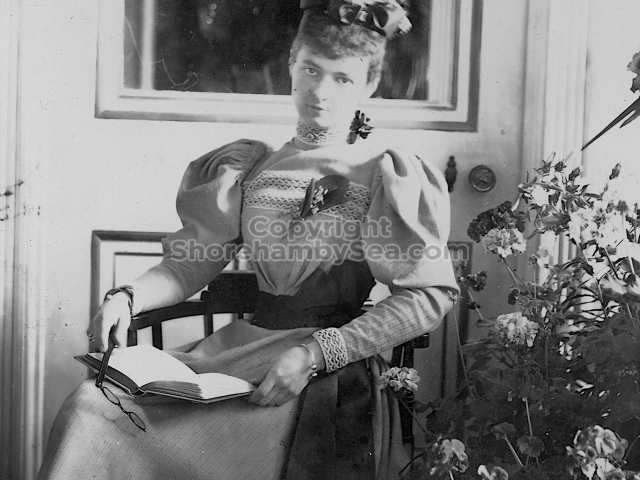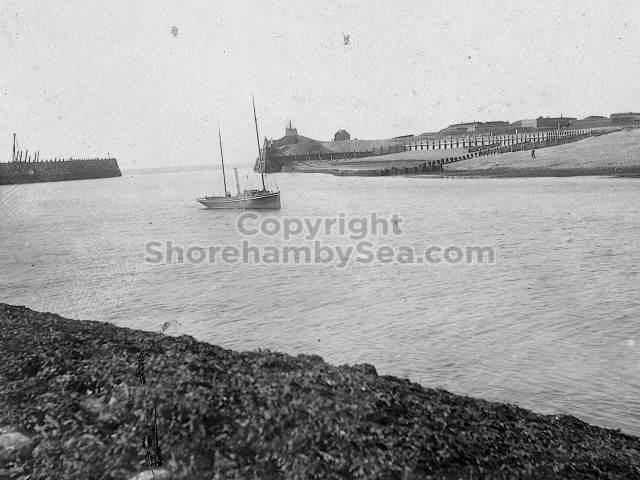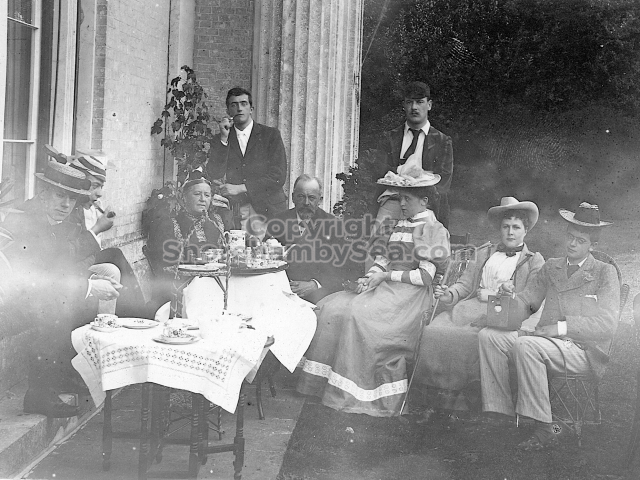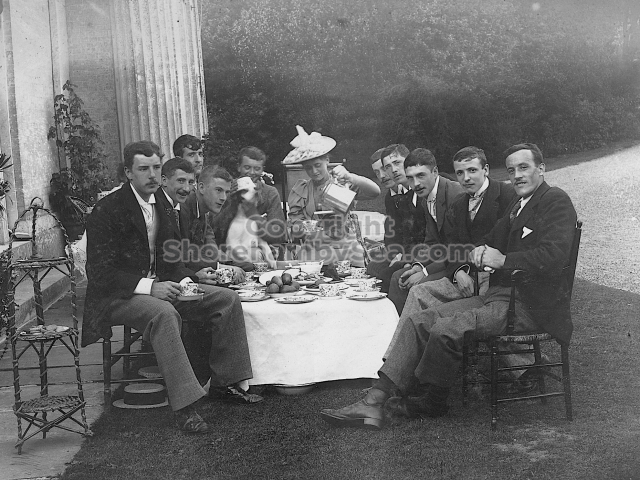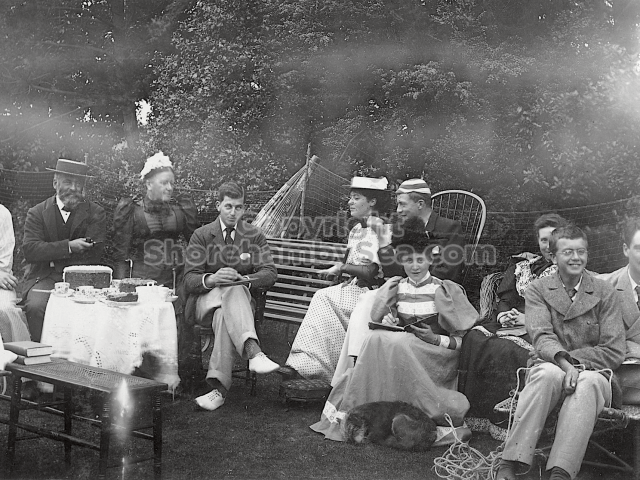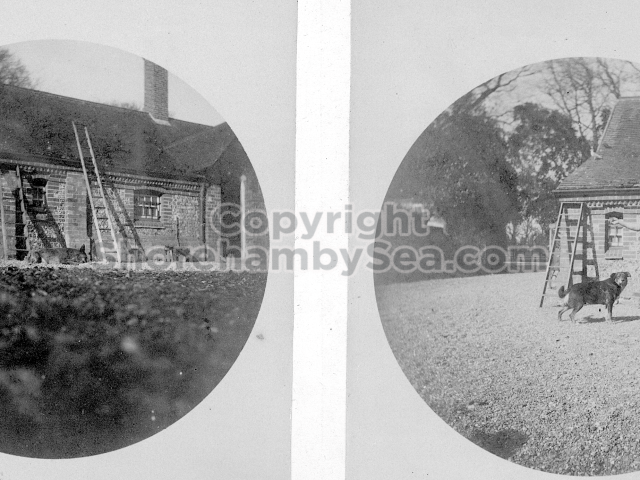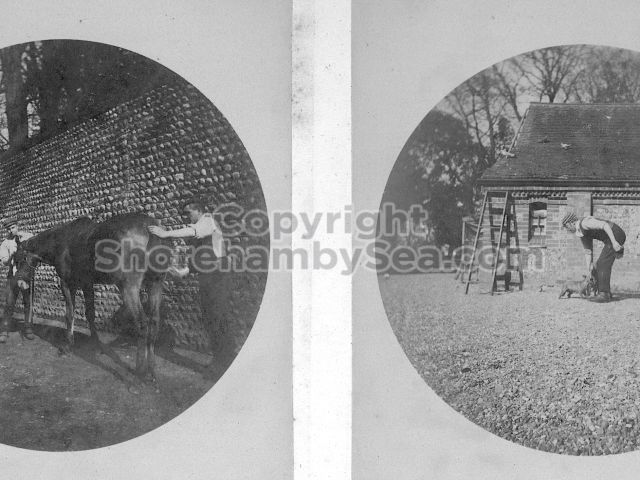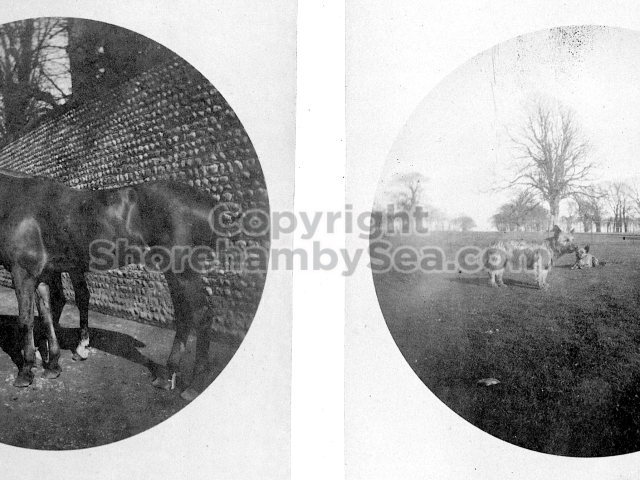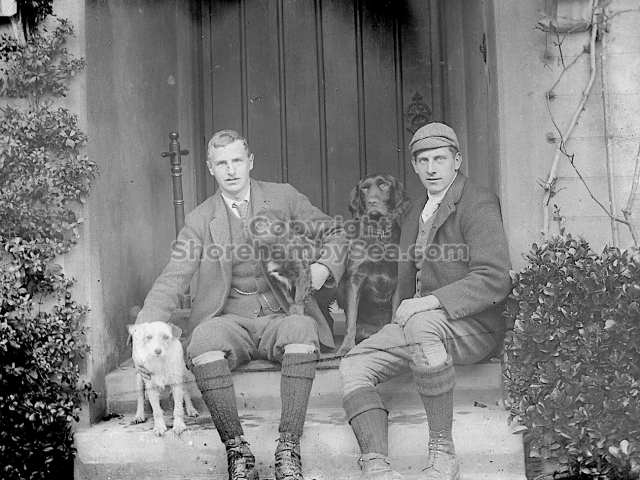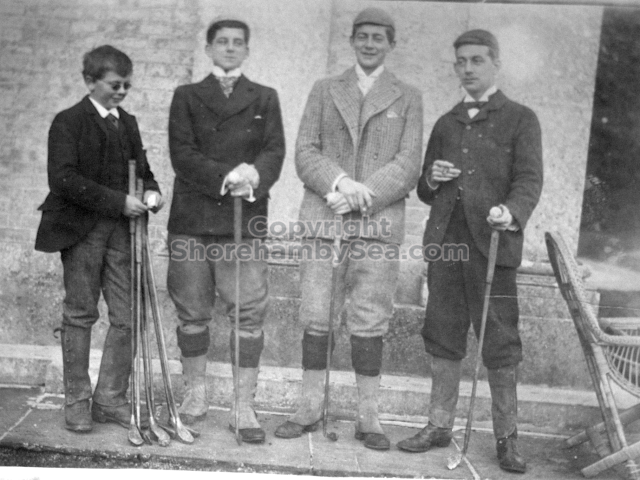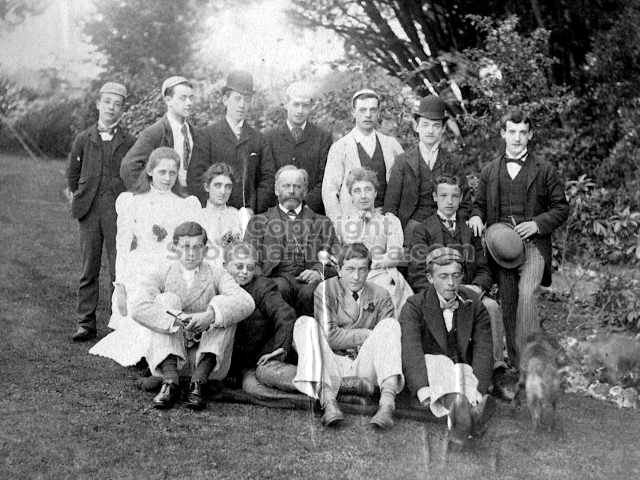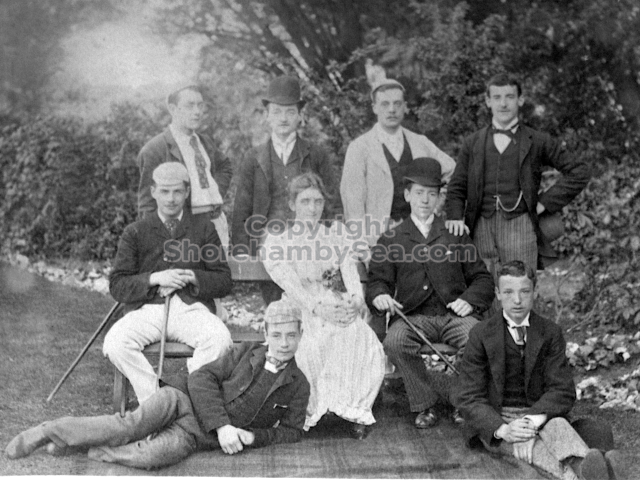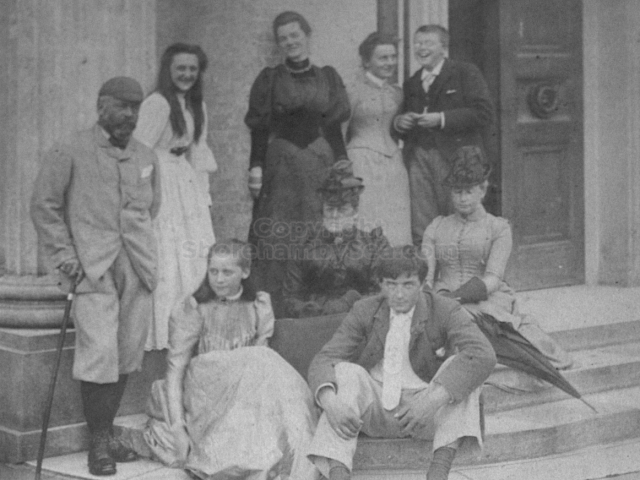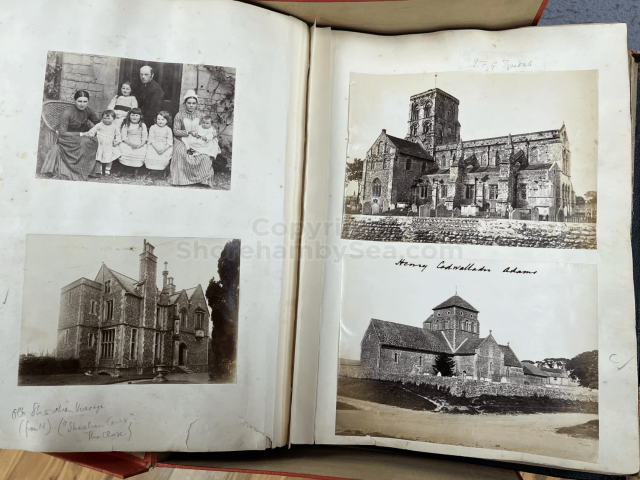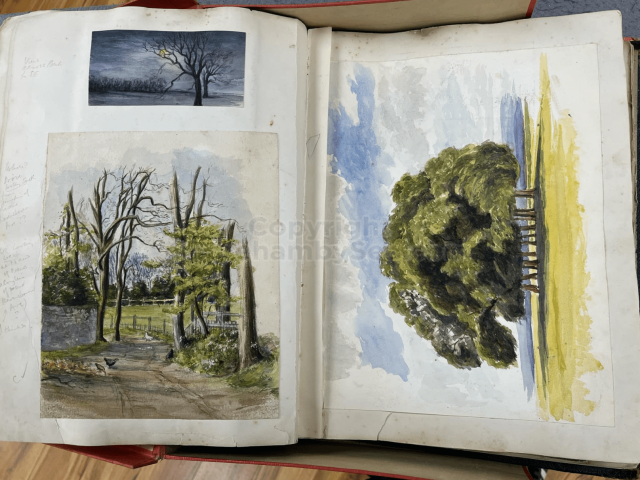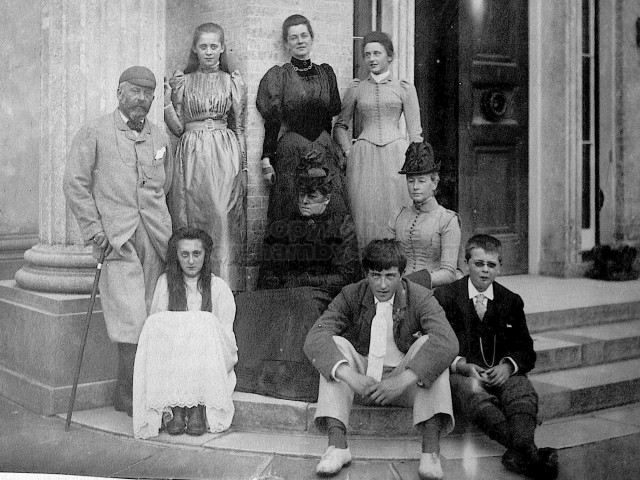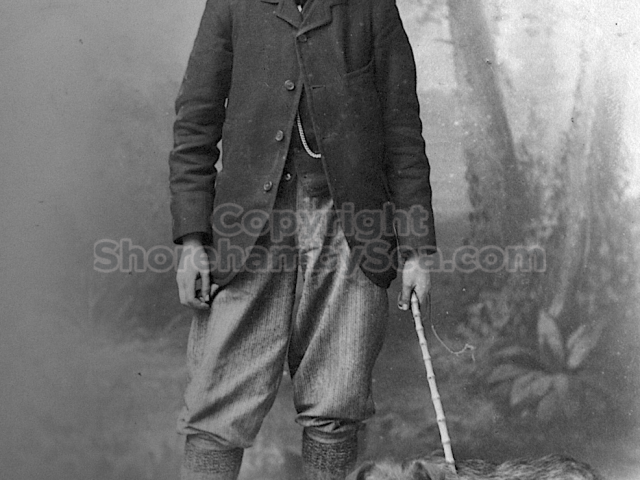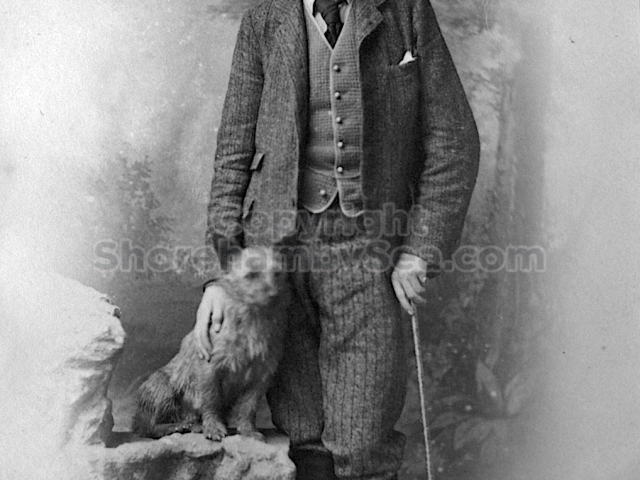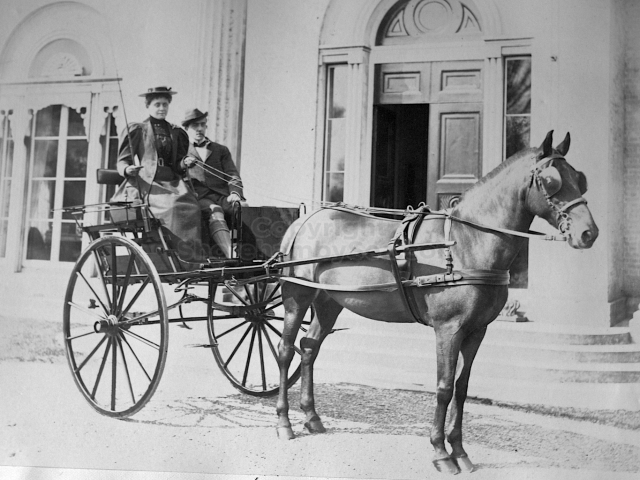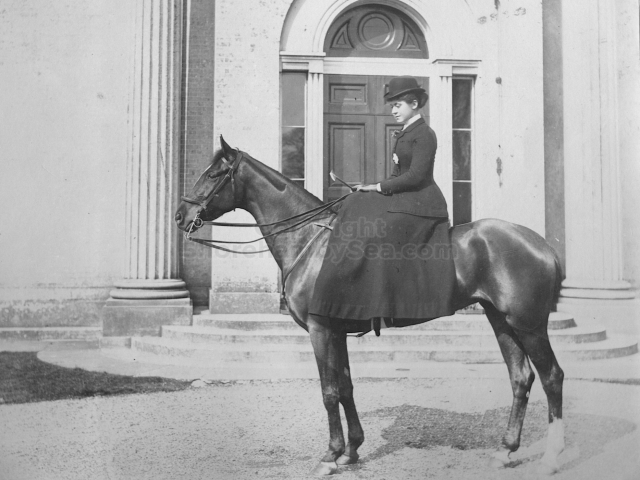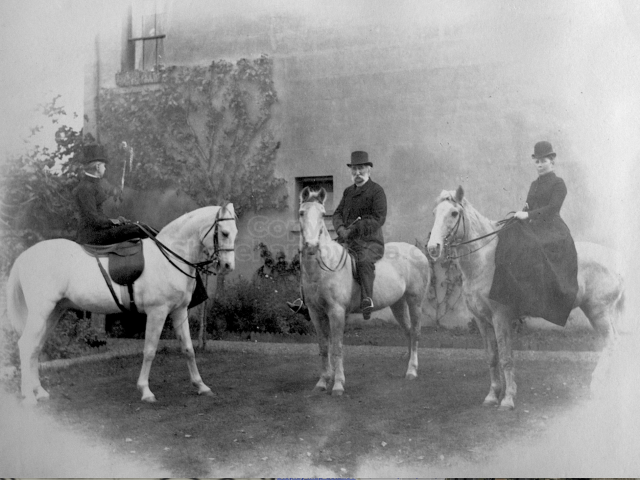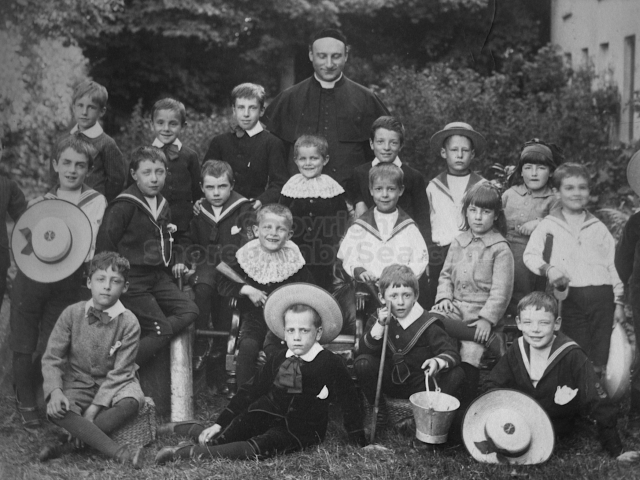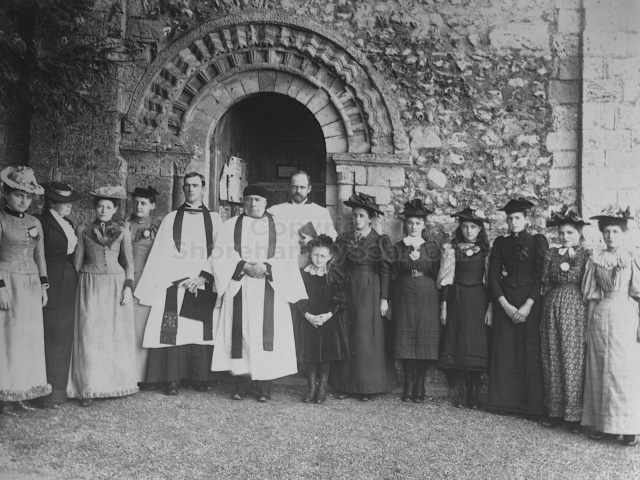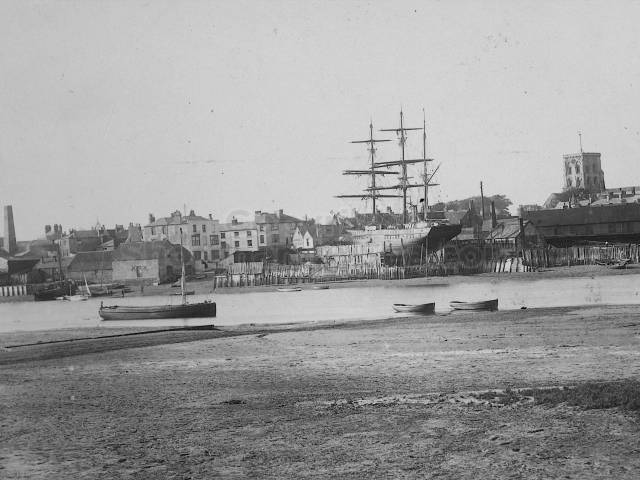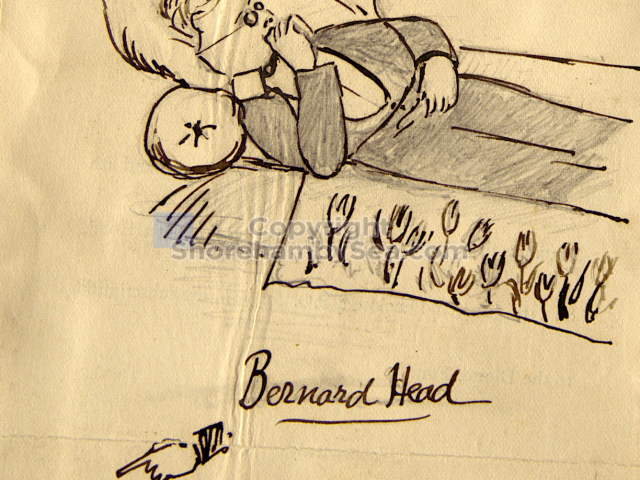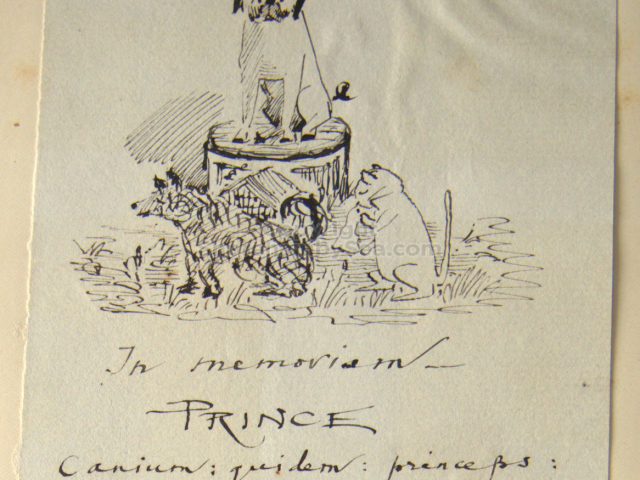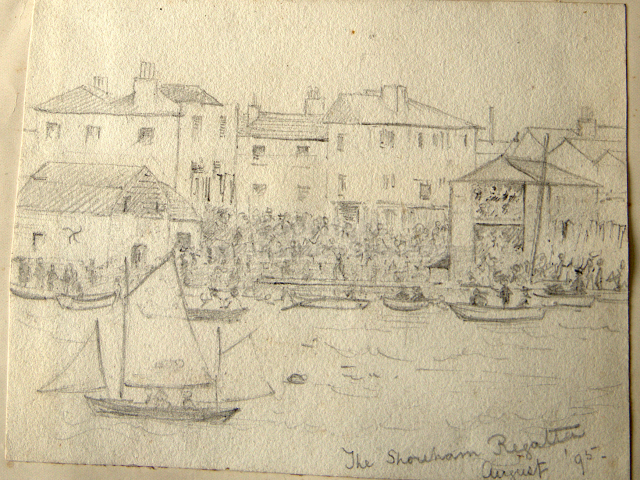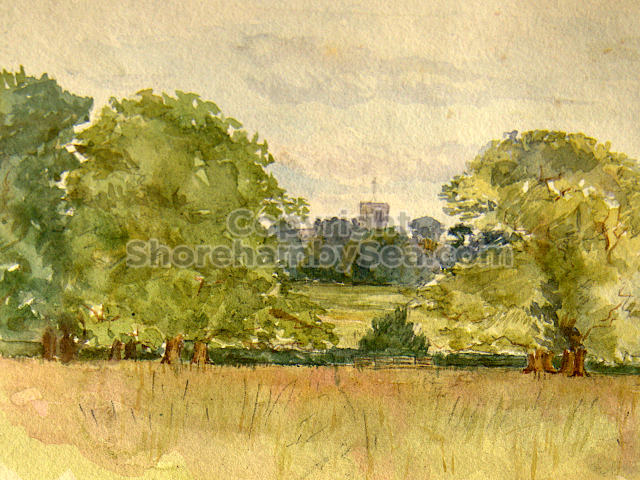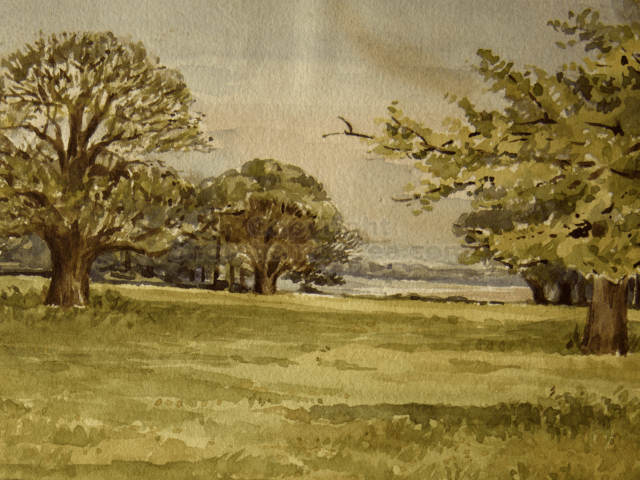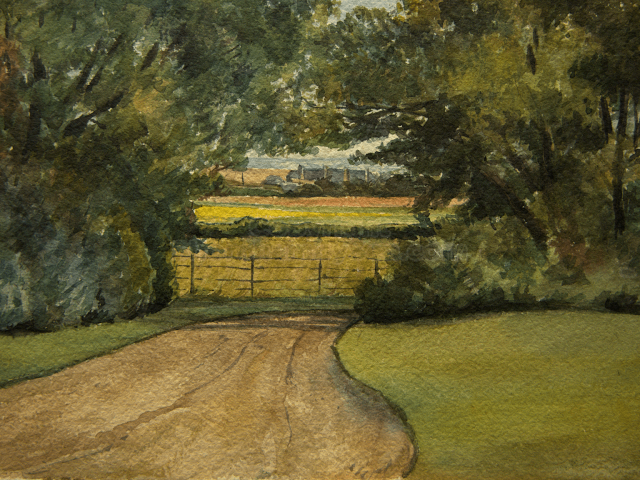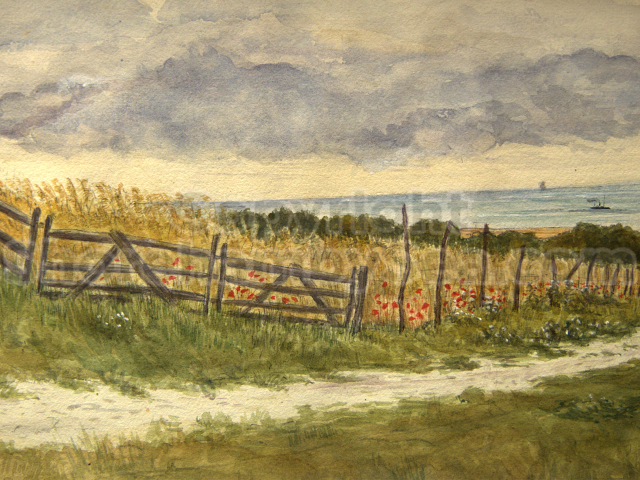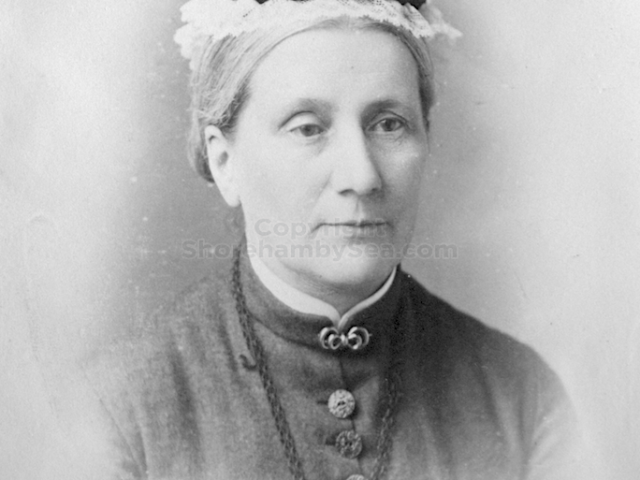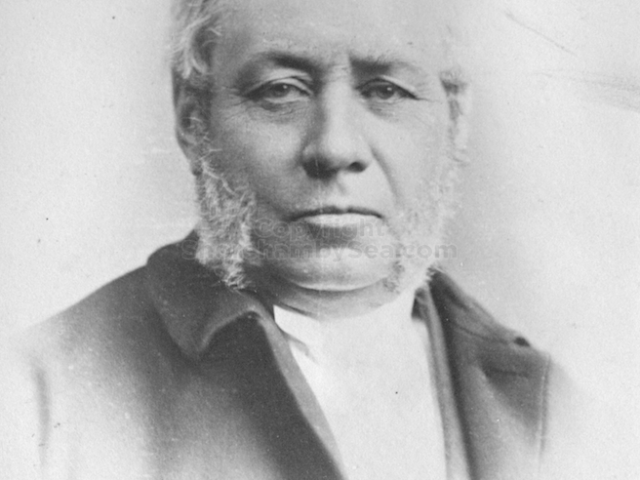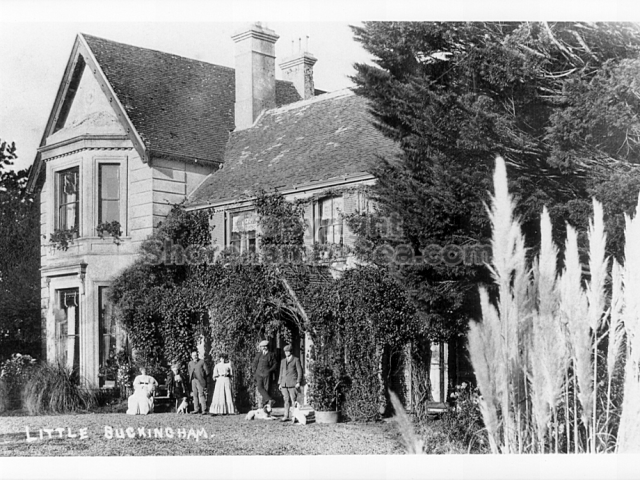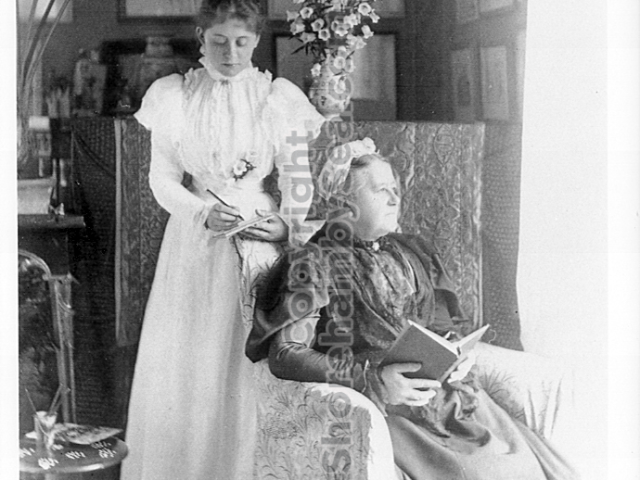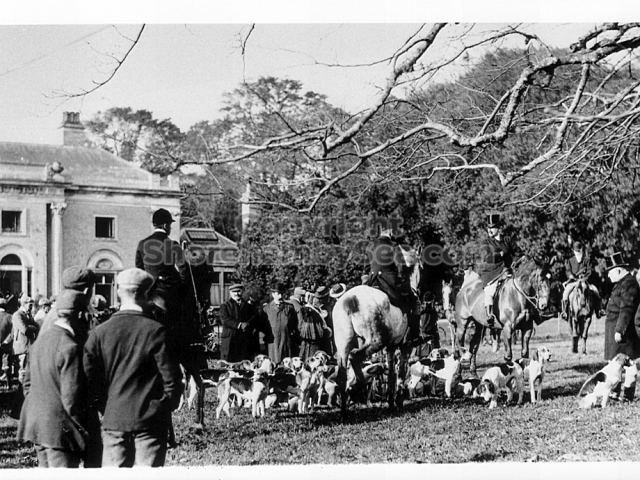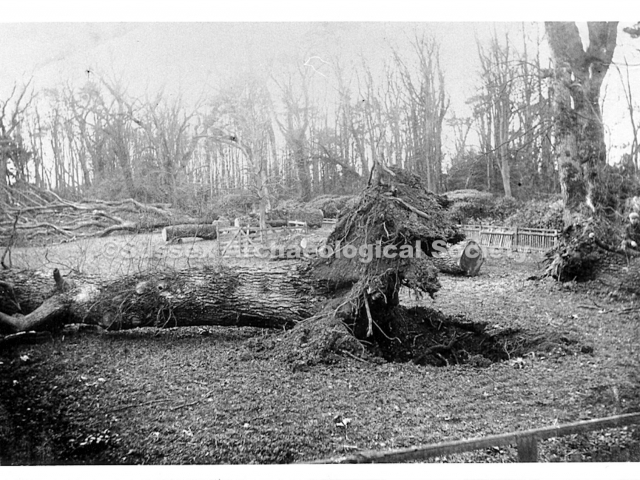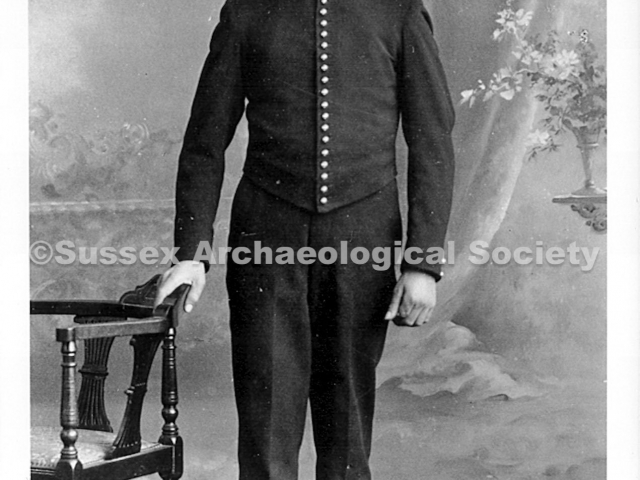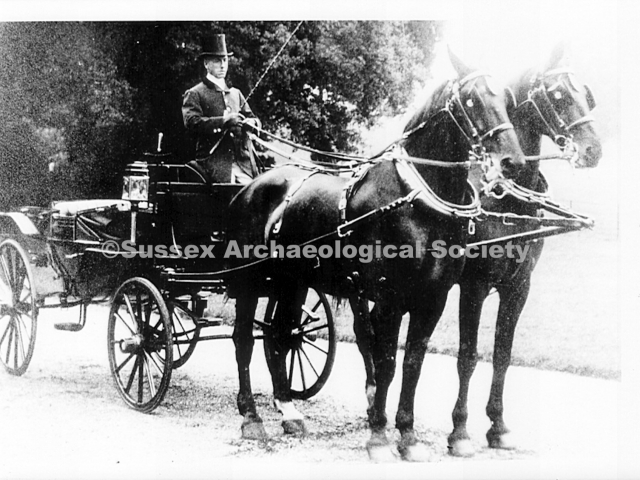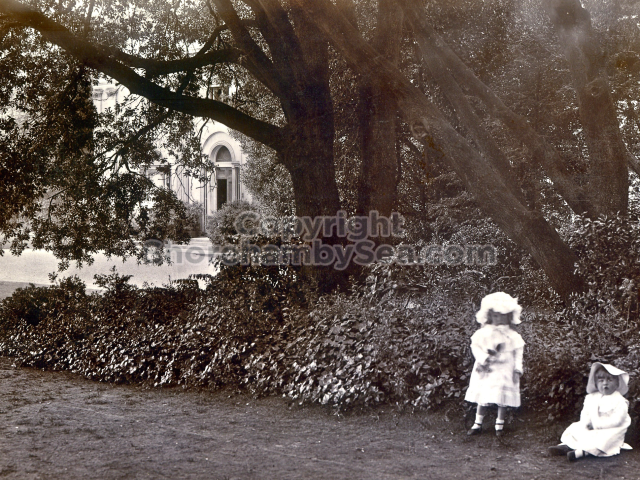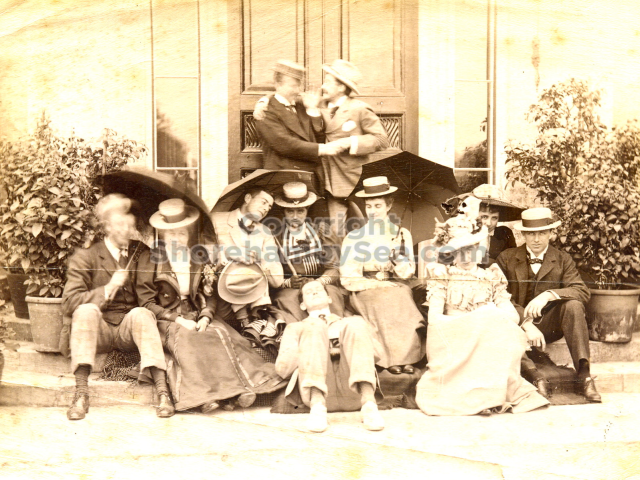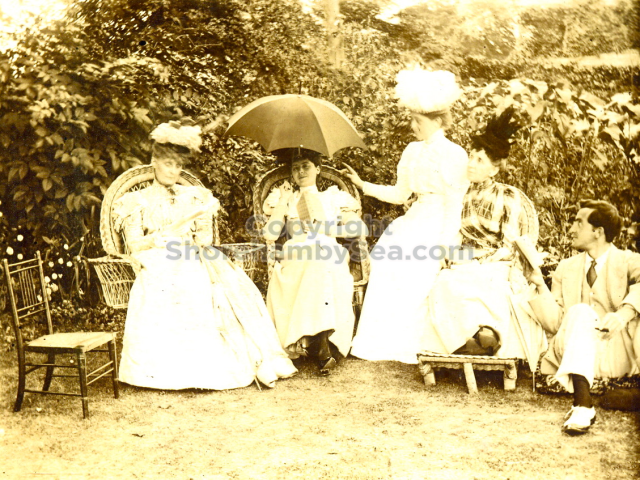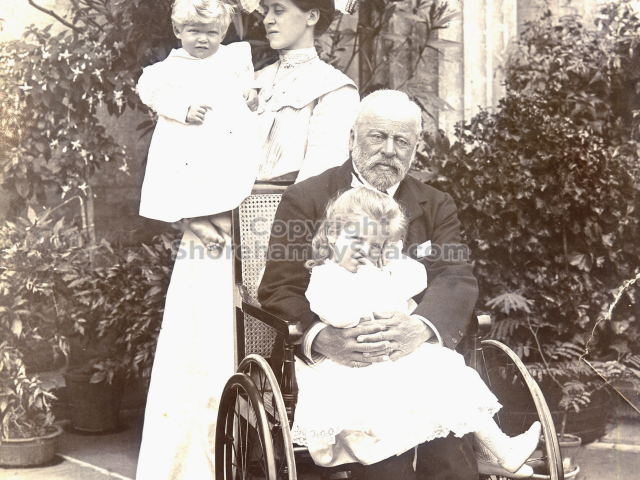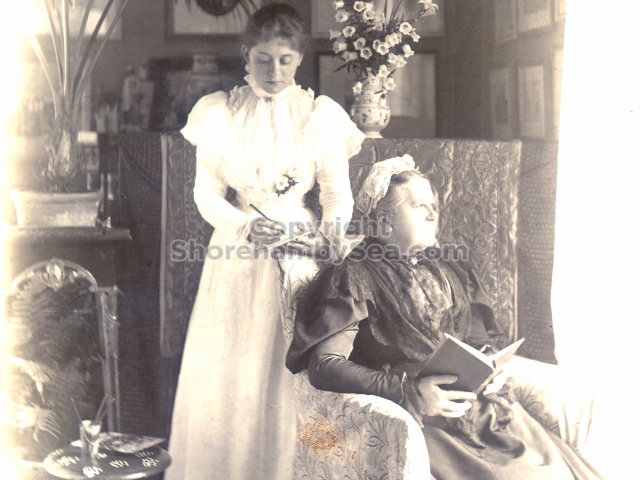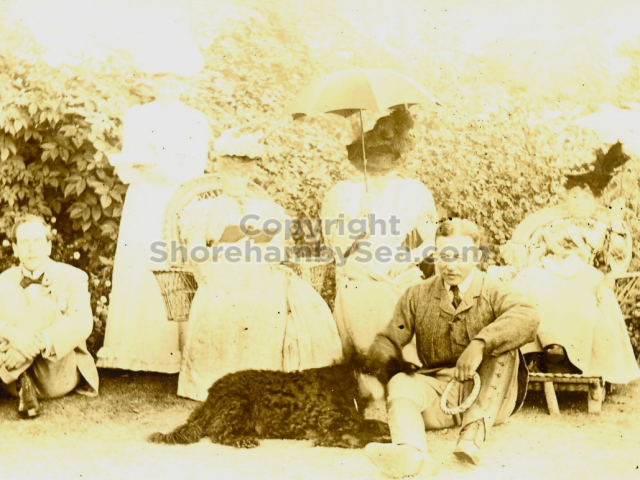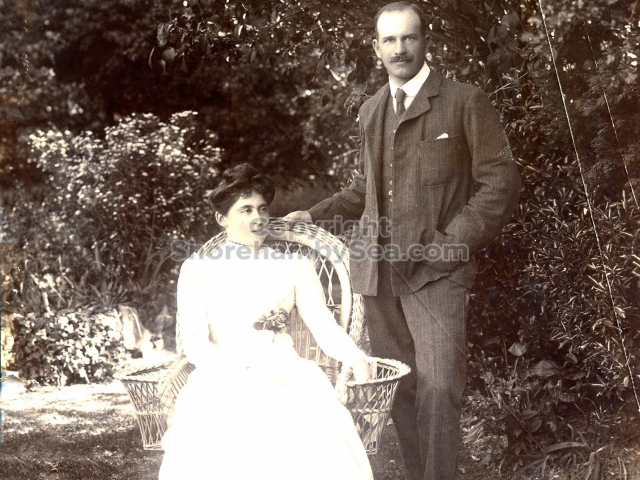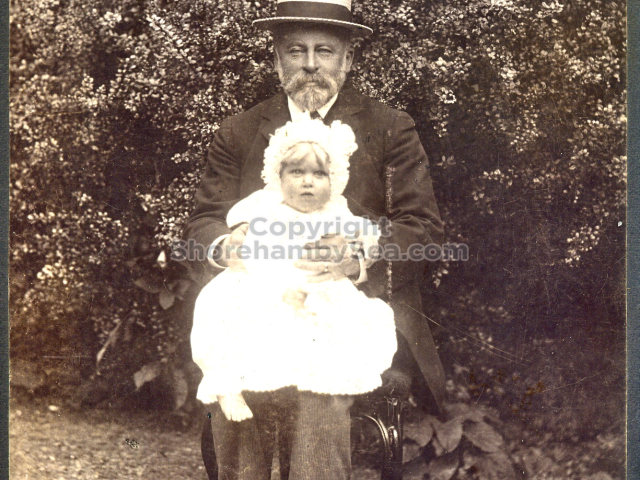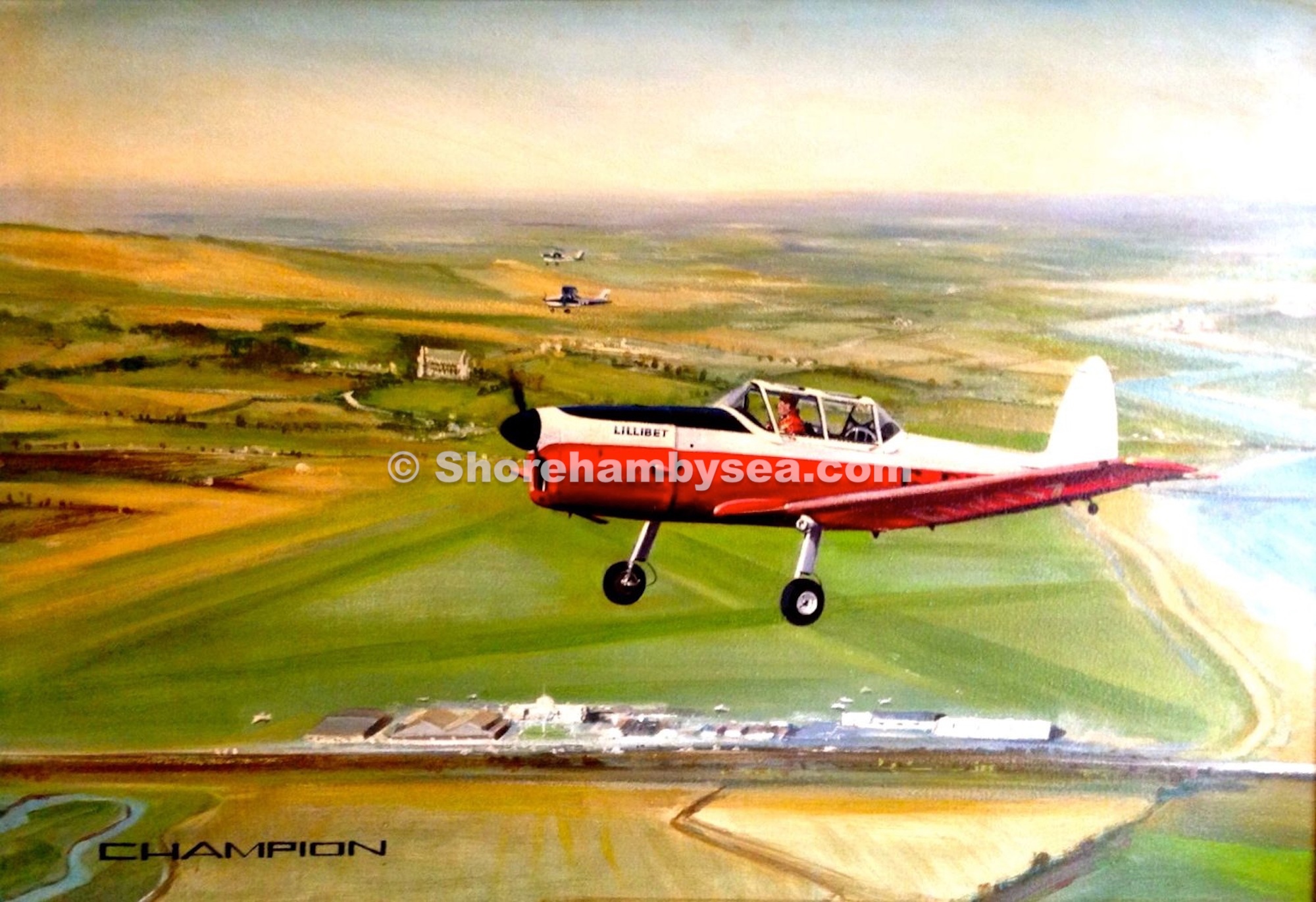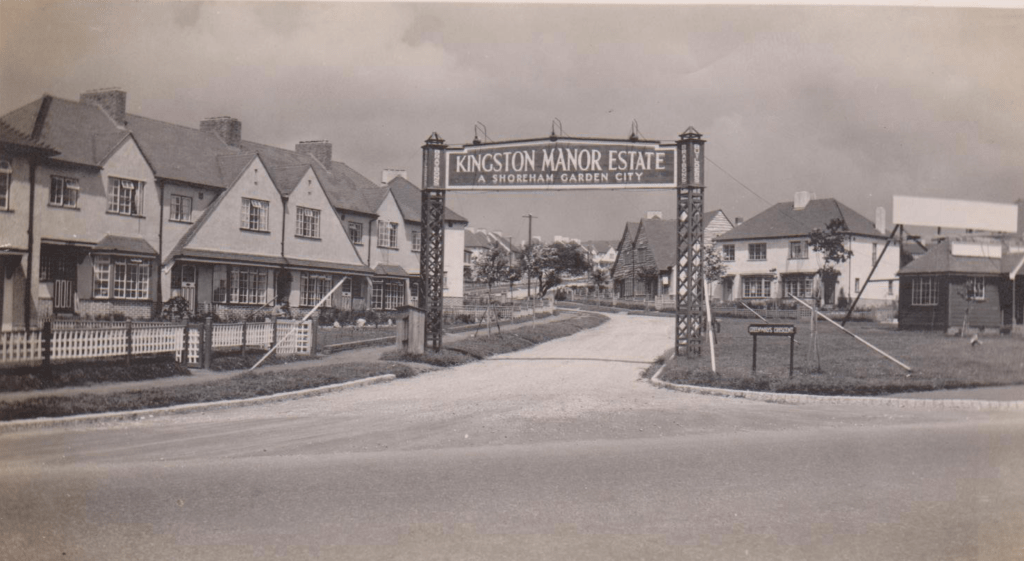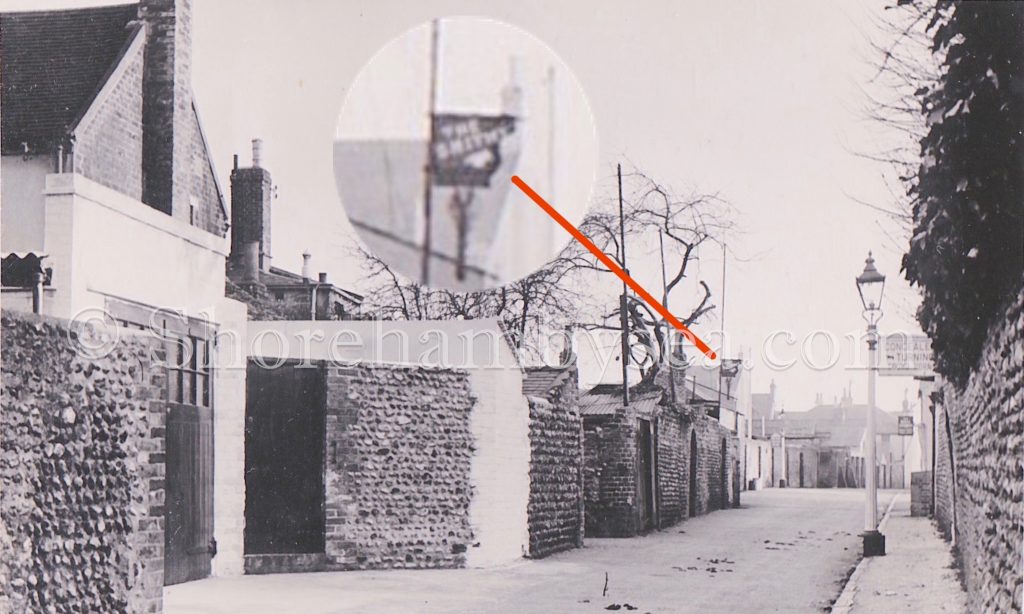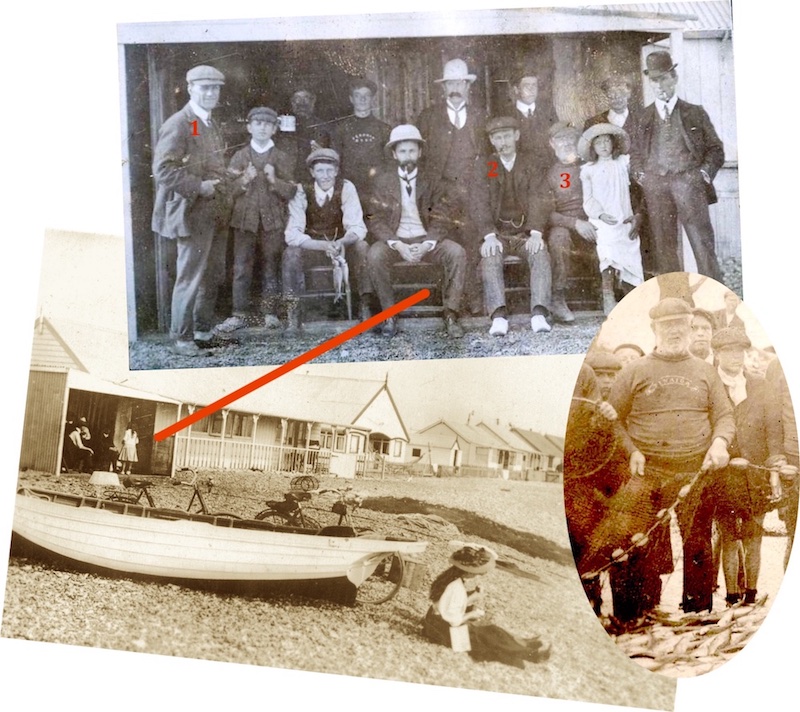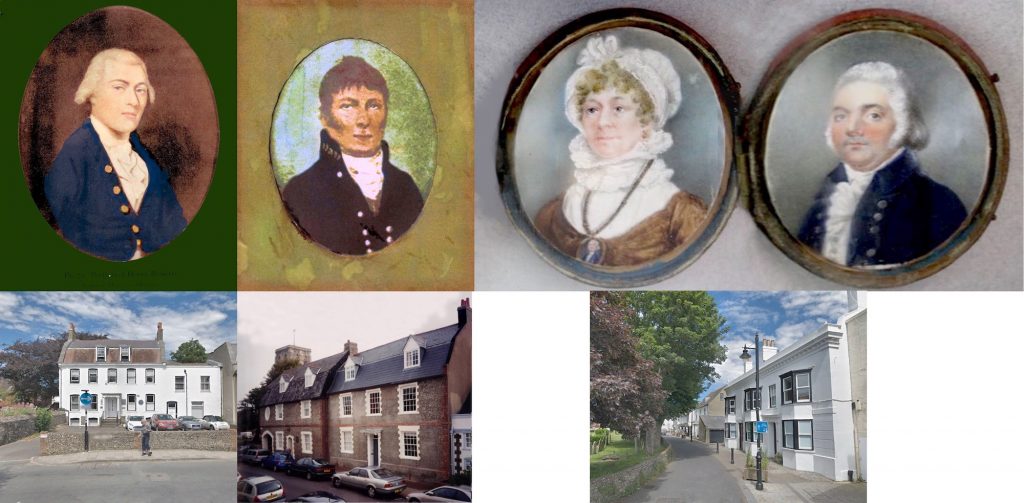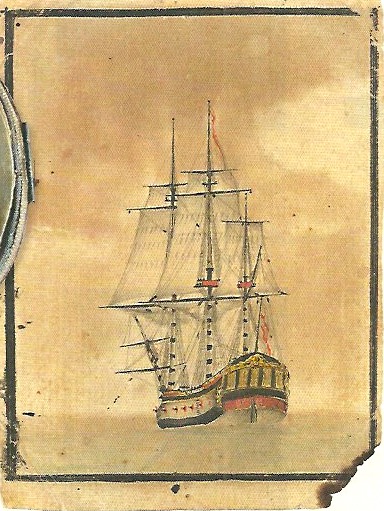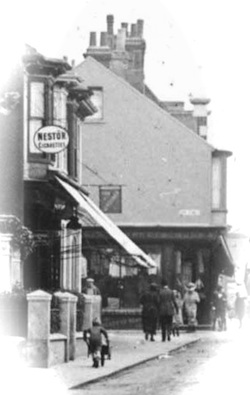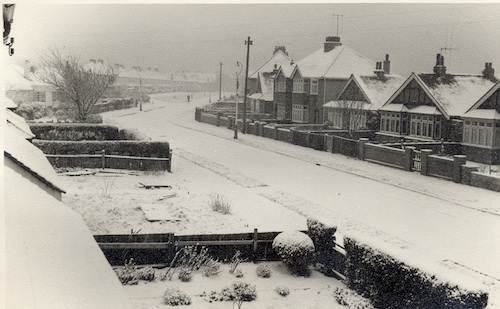1841 census of Great Buckingham House, Old Shoreham Street, Old Shoreham
| First name | Surname | Gender | Age | Born | Place of birth |
| Harry | Bridger | Male | 41 | 1800 | Sussex, England |
| Sarah Louisa | Bridger | Female | 41 | 1800 | Sussex, England |
| Harry | Bridger | Male | 12 | 1829 | Sussex, England |
| Mary | Bridger | Female | 11 | 1830 | Sussex, England |
| Isabella | Bridger | Female | 9 | 1832 | Sussex, England |
| Emma | Bridger | Female | 8 | 1833 | Sussex, England |
| William | Bridger | Male | 6 | 1835 | Sussex, England |
| Frederick | Bridger | Male | 4 | 1837 | Sussex, England |
| Harriett | Bridger | Female | 70 | 1771 | Sussex, England |
| Catherine | Bridger | Female | 69 | 1772 | Sussex, England |
| Mary | Best | Female | 21 | 1820 | Sussex, England |
| John | Smart | Male | 24 | 1817 | Sussex, England |
| Robert | Harman | Male | 33 | 1808 | Sussex, England |
| William | Bonny | Male | 40 | 1801 | Sussex, England |
| George | Smart | Male | 16 | 1825 | Sussex, England |
| Diana | Marsh | Female | 57 | 1784 | – |
| Jane | Ratcliff | Female | 25 | 1816 | Sussex, England |
| Hannah | Osborne | Female | 17 | 1824 | Sussex, England |
| Elizabeth | Mitchell | Female | 24 | 1817 | Sussex, England |
| Ann | Fiest | Female | 21 | 1820 | Sussex, England |
1861 census of Great Buckingham House, Old Shoreham Street, Old Shoreham
| Harry C | Bridger | Head | Married | Male | 61 | 1800 | Gentleman | Old Shoreham, Sussex, England |
| Sarah L | Bridger | Wife | Married | Female | 61 | 1800 | – | Withdean, Sussex, England |
| Fredrick | Bridger | Son | Unmarried | Male | 23 | 1838 | Gentleman | Old Shoreham, Sussex, England |
| Augustus G | Bridger | Son | Unmarried | Male | 19 | 1842 | Gentleman | Old Shoreham, Sussex, England |
| Ann F | Elmont | Servant | Widow | Female | 60 | 1801 | Nurse | Birmingham, Warwickshire, England |
| James J | Parsons | Servant | Unmarried | Male | 22 | 1839 | Baker | Shoreham, Sussex, England |
| Susan | Hocombe | Servant | Unmarried | Female | 35 | 1826 | Cook | Sevington, Somerset, England |
| Harrietta | Wallick | Servant | Unmarried | Female | 15 | 1846 | House maid | Sussex, England |
| Arthur | Brown | Servant | Unmarried | Male | 18 | 1843 | Foot man | Warnham, Sussex, England |
| Hester | Rewell | Servant | Unmarried | Female | 22 | 1839 | Kitchen maid | Chellington, Sussex, England |
| Joseph | Kearwell | Servant | Unmarried | Male | 24 | 1837 | D gardner | West Stoke, Sussex |
1871 census of Great Buckingham House, Old Shoreham Street, Old Shoreham
| Harry C | Bridger | Head | – | Male | 71 | 1800 | Landowner | Old Shoreham, Sussex, England |
| Sarah L | Bridger | Wife | – | Female | 71 | 1800 | – | Patcham, Sussex, England |
| Adela C | Bridger | Daughter | – | Female | 27 | 1844 | – | Old Shoreham, Sussex, England |
| William | Bridger | Son | – | Male | 36 | 1835 | Captain Sussex Imperial Yeomanry | Old Shoreham, Sussex, England |
| Mary B | Bridger | Daughter-in-law | – | Female | 34 | 1837 | – | Yenston, Dorset, England |
| James C | Bridger | Grandson | – | Male | 10 | 1861 | – | Hale, Surrey, England |
| Lilian L | Bridger | Granddaughter | – | Female | 5 | 1866 | – | West Grinsted, Sussex, England |
| Mabel B | Bridger | Granddaughter | – | Female | 3 | 1868 | – | West Grinsted, Sussex, England |
| Adela K | Bridger | Granddaughter | – | Female | 2 | 1869 | – | West Grinsted, Sussex, England |
| Agnes V H | Bridger | Granddaughter | – | Female | 0 | 1871 | – | West Grinsted, Sussex, England |
| Mary | Bridgland | Servant | – | Female | 53 | 1818 | Cook domestic servant | Hartfield, Sussex, England |
| Sarah J | Blackhall | Servant | – | Female | 44 | 1827 | Ladymaid domestic servant | Mortlake, Surrey, England |
| Elizabeth | Ponsford | Servant | – | Female | 22 | 1849 | Kise housemaid domestic servant | Hitlishaly, Devon, England |
| Anne | Payne | Servant | – | Female | 17 | 1854 | Housemaid domestic servant | Old Shoreham, Sussex, England |
| Mary | Tucker | Servant | – | Female | 20 | 1851 | Nurse maid domestic servant | Chichester, Sussex, England |
| Sarah | Bishop | Servant | – | Female | 16 | 1855 | Nurse maid domestic servant | Petcombe, Somerset, England |
| James J | Parsons | Servant | – | Male | 32 | 1839 | Butcher domestic servant | New Shoreham, Sussex, England |
| Maria | Parsons | – | – | Female | 42 | 1829 | Butcher wife | Beeding, Sussex, England |
| William | Wakeman | Servant | – | Male | 18 | 1853 | Groom | Ightham, Kent, England |
| James | Kent | Servant | – | Male | 17 | 1854 | Under gardener domestic servant | Old Shoreham, Sussex, England |
1881 census of Great Buckingham House, Old Shoreham Street, Old Shoreham
| Harry | Bridger | Head | Married | Male | 52 | 1829 | Magistrate esquire | Sussex, England |
| Eliza Ann | Bridger | Wife | Married | Female | 52 | 1829 | Magistrate esquire wife | Lambeth, Surrey, England |
| Florence Louisa | Bridger | Daughter | Single | Female | 25 | 1856 | – | Sussex, England |
| Dulcibella Mary | Bridger | Daughter | Single | Female | 22 | 1859 | – | Sussex, England |
| Marguerite | Bridger | Niece | Single | Female | 9 | 1872 | – | Sussex, England |
| Henry | Spratt | Servant | Single | Male | 19 | 1862 | Groom | Wickham, Sussex, England |
| Marian Jemima | Phillips | Servant | Single | Female | 26 | 1855 | Domestic servant | Emsworth, Hampshire, England |
| Susan Andrews Elliot | Lamble | Servant | Single | Female | 27 | 1854 | Domestic servant | Blackawton, Devon, England |
| Gemma | Boniface | Servant | Single | Female | 22 | 1859 | Domestic servant | Hailsham, Sussex, England |
| Mary Ann | Fuller | Servant | Single | Female | 22 | 1859 | Domestic servant | Bexley, Kent, England |
| Caroline | Lisher | Servant | Single | Female | 20 | 1861 | Domestic servant | Sompting, Sussex, England |
1891 census of Great Buckingham House, Old Shoreham Street, Old Shoreham
| First name(s) | Last name | Relationship | Marital status | Sex | Age | Birth year | Occupation | Birth place |
| Henry | Head | Head | Married | Male | 56 | 1835 | Underwriter | Ipswich, Suffolk, England |
| Hester | Head | Wife | Married | Female | 56 | 1835 | – | Stamford Hill, Middlesex, England |
| Francis | Head | Son | Single | Male | 23 | 1868 | Underwriter | Stoke Newington, Middlesex, England |
| Christopher | Head | Son | Single | Male | 21 | 1870 | Student of law | Stoke Newington, Middlesex, England |
| John Alban | Head | Son | Single | Male | 17 | 1874 | Scholar | Stamford Hill, Middlesex, England |
| Hester | Head Jr | Daughter | Single | Female | 16 | 1875 | Scholar | Stamford Hill, Middlesex, England |
| Bernard | Head | Son | Single | Male | 15 | 1876 | Scholar | Stamford Hill, Middlesex, England |
| Violet | Ponsonby | Visitor | Single | Female | 14 | 1877 | Scholar | Belgravia, London, England |
| Mary | Felce | Governess | Single | Female | 27 | 1864 | Governess | Launceston, Cornwall, England |
| Geoffrey | Head | Son | Single | Male | 19 | 1872 | Clerk | Stamford Hill, Middlesex, England |
| Edward John | Peatt | Butler | Single | Male | 28 | 1863 | Domestic servant | London, England |
| William Edward | Bishop | Footman | Single | Male | 20 | 1871 | Domestic servant | Shoreham, Sussex, England |
| James | Brown | General | Single | Male | 28 | 1863 | Domestic servant | Scotland |
| Jane Amelia | Bennett | Servant | Single | Female | 40 | 1851 | Domestic nurse | Hackney, Middlesex, England |
| Alma | Caudwell | Servant | Single | Female | 36 | 1855 | Domestic cook | Ixworth, Suffolk, England |
| Eliza E | Gooderham | Servant | Single | Female | 32 | 1859 | Domestic housemaid | Old Buckenham, Norfolk, England |
| Margaret E | Daniells | Servant | Single | Female | 20 | 1871 | Domestic housemaid | Old Buckenham, Norfolk, England |
| Emily | Roadnight | Servant | Single | Female | 21 | 1870 | Domestic kitchen maid | Hackney, Middlesex, England |
| Annie | Goldsmith | Servant | Single | Female | 17 | 1874 | Domestic kitchen maid | Shoreham, Sussex, England |
1901 census of Buckingham House, Old Shoreham Street, Old Shoreham
| Francis | Head | Son | Single | Male | 33 | 1868 | Member of “lloyds” royal exchange | Stoke Newington, Middlesex, England |
| Alfred | Nicholls | Servant | Single | Male | 38 | 1863 | Coachman domestic | Chigwell, Essex, England |
| Arthur | Gull | Servant | Single | Male | 28 | 1873 | Groom domestic | Ardleigh, Essex, England |
| Emily | Wood | Servant | Single | Female | 36 | 1865 | Cook domestic | Dunster, Somerset, England |
| Mary A | Sampson | Servant | Single | Female | 21 | 1880 | Kitchenmaid domestic | Shoreham, Sussex, England |
| Charles T | Parris | Servant | Single | Male | 26 | 1875 | Footman domestic | Sussex, England |
| Mabel | Page | Servant | Single | Female | 15 | 1886 | Scullery maid domestic | Shoreham, Sussex, England |
| Nellie | Sampson | Servant | Single | Female | 17 | 1884 | Housemaid domestic | Shoreham, Sussex, England |
| Minnie E | West | Servant | Single | Female | 23 | 1878 | Housemaid domestic | London, Middlesex, England |
| Jane | Bennett | Servant | Single | Female | 55 | 1846 | Nurse domestic | London, Middlesex, England |
1911 census of Buckingham House, Old Shoreham Street, Old Shoreham
| William Godson | Little | Head | Married | Male | 59 | 1852 | Director of company | London Regents Park |
| Ada Waide | Little | Wife | Married | Female | 55 | 1856 | – | London Primrose Hill |
| Annie Elizabeth | Lowe | Granddaughter | – | Female | 1 | 1910 | – | Sussex Hove |
| Paul | Ewens | Visitor | Married | Male | 63 | 1848 | Director of company | London Clerkenwell |
| Margaret | Wiggins | – | Single | Female | 32 | 1879 | Servant | Moreton in the Marsh Gloucestershire |
| Ada Macey | Lodge | – | Single | Female | 36 | 1875 | Servant | Sussex Brighton |
| Hilda | Turner | – | Single | Female | 22 | 1889 | Servant | Feltham Middlesex |
| Alice | Wellstead | – | Single | Female | 22 | 1889 | Servant | Dorset Broasen |
| Elsie Elizabeth | Fugawes | – | Single | Female | 20 | 1891 | Servant | Surrey Fainham |
| Arthur | Cherry | – | Single | Male | 15 | 1896 | Servant | Sussex Newhaven |


